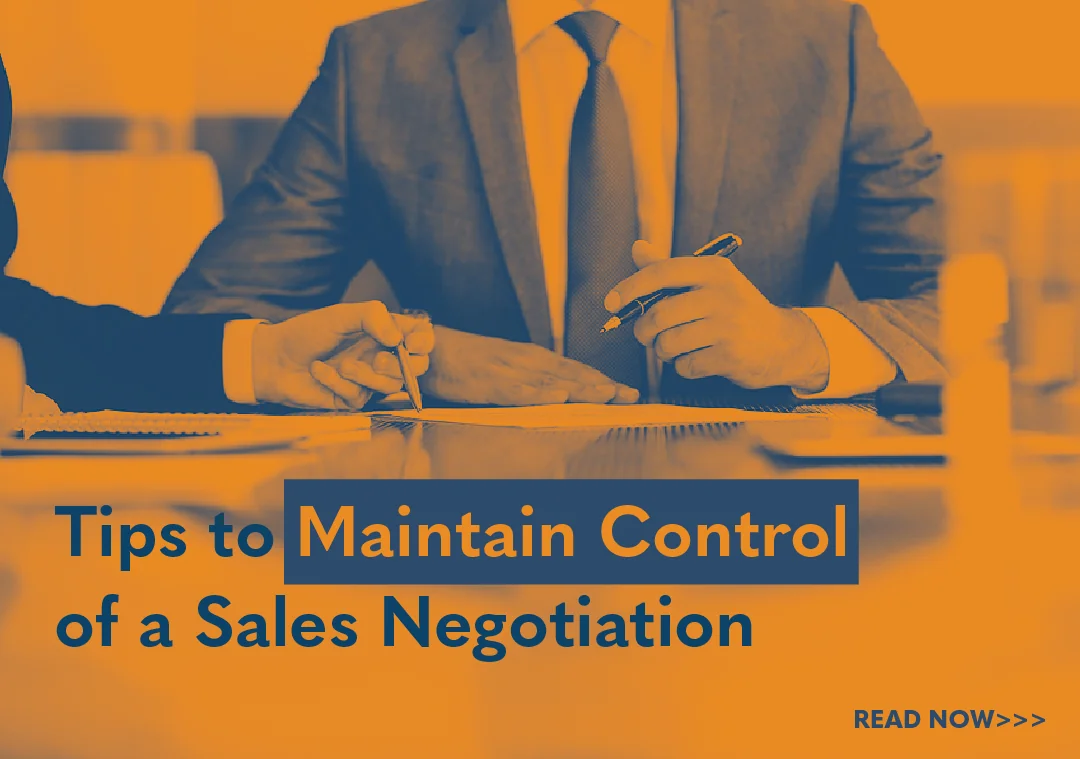Achieving Win-Win Sales Negotiations

B2B sales negotiations are a delicate dance between two parties. In this, each strives to achieve their own objectives while maintaining a mutually beneficial relationship. Today, the emphasis is no longer solely on securing deals at any cost. Rather, it’s fostering long-term partnerships built on trust and collaboration. This shift has led to the adoption of win-win negotiation tactics where both sides achieve their goals.
Of course, this isn’t always easy. Sales negotiations are tough. In fact, 6Sense notes 36% of sales reps cite closing as the most difficult step in a sales process. Part of this, no doubt, stems from trying to balance profits with relationships. As difficult as this may be, there are several tactics that help. With that’s, let’s examine how sales organizations can achieve win-win sales negotiations.
Understanding Win-Win Negotiation
Before diving into specific tactics, it’s crucial to grasp the essence of win-win negotiation. At its core, it is about creating value for both parties. It’s not a zero-sum game where one side’s gain comes at the other’s loss. This recalls outdated and false stereotypes of disingenuous and dishonest salespeople.
Today, win-win negotiations derive from consultative selling, which is less about products and more about people. Sellers are not transactional product pushers out for quick sales. Instead, they’re trusted advisors who invest and partner in their client’s problems and solutions. Research shows that up to 89% of buyers describe the seller they ultimately chose as a trusted advisor.
As such, adversarial negotiations are counterproductive. They negate all the gains achieved to reach the negotiation. Hence, a win-win approach. This shifts the emphasis to identifying common interests, exploring solutions, and reaching mutually beneficial agreements. To achieve this, top sellers negotiate throughout the sales process. Then, all that’s left is finalizing details.
Balancing Profitability and Customer Satisfaction
In sales negotiations, organizations must balance profitability with customer satisfaction. Maximizing margins ensures a healthy bottom line. But sellers must also deliver value and maintain relationships. After all, this secures repeat business and referrals. And this starts with win-win outcomes. Here are some tactics:
Preparation
Preparation starts with researching the client. You must understand their needs, pain points, and objectives. In negotiations, it is also identifying your own goals and limits. This nexus forms the basis of all sales negotiations. However, research by negotiation specialists Scotwork notes that many salespeople are unprepared. For example:
- 85% don’t establish what the other side wants.
- Only about half (51%) consider what’s important to them.
- Only 26% of sales negotiators always know what questions they will ask.
In contrast, 70% of buyers are fully prepared. Therefore, sellers must keep up. This includes:
- Knowing decision makers
- Understanding pain points
- Setting goals and limits
- Anticipating objections
In addition to knowing who’s who in the decision-making process, know their level of influence. Identify who controls the budget and signs-off on purchases.
It is also critical to understand their pain points. These drive their decisions. Sellers must ensure solutions and timeframes align with the buyer’s needs.
A seller’s goals and limits are crucial. Without these, decisions might be made on the fly or be based on emotion. This can lead to regret and leave money on the table.
Price is often a buyer’s primary objection. However, several others are common. These include timeframe, level of urgency, and the competition. Plus, different decision makers pose different objections. Proper prep ensures readiness.
Value Over Price
Price must be seen in relation to value. As buyers often want to discuss the price first, this can be a difficult trap. It reduces the negotiation to a singular, make-or-break point. Instead, sellers should widen the net. Consider the following:
- Delay the price conversation
- Build value
According to Lead Forensics, 50% of B2B deals fall through because of budget. In addition, 25% come down to timing. Therefore, respectfully delay the price talk until your price point is justified.
To do this, shift the conversation to your value proposition. Emphasize the benefits and ROI. Show how products address specific needs and deliver tangible value. Also, build in value-based options, like tiered pricing, loyalty rewards, and extended warranties.
Collaboration
Key to win-win outcomes is making the negotiation less competitive and more collaborative. When sellers treat customers as partners, they foster collaboration. Consider the following:
- Active listening
- Asking the right questions
- Inviting feedback
- Seeking verbal agreement
- Reiterating agreements
Listen for content, meaning, and feeling. A buyer’s intent is not only what they say. Be attentive to what they don’t say, their body language, and other nonverbal cues.
Similarly, ask the right questions at the right time. This includes open-ended questions that invite buyers to share. Rather than seeking yes-or-no answers, ask buyers to explain and elaborate.
Always note the level of attention and engagement. Head nods and smiles are great but invite feedback. Ask them to verbalize their feelings. This not only elicits information. It helps recall agreement.
In addition, reiterate gains. Before moving on, summarize achievements and agreements. Also, use the customer’s own words, not synonyms or vague paraphrases.
Seek Trades
In any negotiation, disagreements do not have to be roadblocks. They can be opportunities to trade. As we saw earlier with price, additional services or features can offset or justify cost. Trades require flexibility and a willingness to compromise. Consider the following:
- Know your concessions
- Give to get
- Build consensus
- Generate urgency
Before entering negotiation, know what you can concede. Some things are more flexible than others. Remember, in the heat of the moment, it can be easy to give too much.
Balance your wants with predetermined concessions. Interestingly, according to Scotwork, 60% of salespeople sometimes have no intention of making concessions. This recalls that zero-sum game we referenced earlier. These sellers no doubt lose more than they win.
In addition, understand the needs of multiple buyers. Seek trades that can align departments or decision makers.
Whenever possible, use your trades and concessions to hasten agreement. Know in advance what you can “spontaneously” add to incite customers to act now.
Build Trust
When negotiating, establish rapport and demonstrate commitment. Avoid overpromising. Be true to your word and deliver what you say. These tips can lay the groundwork for strong and enduring partnerships:
- Express good will
- Establish rapport
- Demonstrate transparency
- Emphasize relationships over deals
- Respect the buyer’s position
Be sure to smile, laugh, and maintain eye contact. A steely-eyed demeanor might work in poker, but it’s a horrible negotiation tactic.
Keep the tone light and positive. Show the client you believe in your products, and you’re committed to helping them.
As a partner, demonstrate commitment to common goals and objectives. Be transparent about your motivations. You want to provide solutions that help people, and you want to make money doing it. Most clients understand and agree.
Today, relationships supersede quick sales. As counterintuitive as this seems, it’s the cornerstone of consultative selling. You wouldn’t dissolve successful partnerships over petty differences. And you should never make rash final offers or rush to walk away.
Whenever possible, show the buyer you understand and appreciate their position. You’re there to help them achieve their objectives.
Play the Long Game
In negotiations, it can be tempting to rush. Sometimes a deal can seem so close, sellers neglect long-term implications. You might make a concession you’ll regret or stand firm on a point worth conceding. However, when both parties win, you form mutually beneficial partnerships. This is more profitable for both. To focus on the long term:
- Build stronger relationships
- Express confidence and enthusiasm
Prioritize the relationship over the deal. The buyer may sign on the dotted line, but if they regret it, you’ll both lose. Confidence and enthusiasm encourage buyers. Tell them they’re making the right choice, and you’re excited to work with them. According to Gartner, confident buyers are 3.6 times more likely to complete high-quality deals.
Conclusion
In B2B sales negotiations, win-win outcomes do not happen naturally. They require work, with both sides balancing profitability and customer satisfaction. In this, a collaborative mindset smooths the process. When both sides commit to working together, the resulting partnership drives mutual growth and success.
We hope this helps your organizations negotiate better and achieve win-win outcomes. For more, download our white paper The Ultimate Guide to Sales Negotiations.

- Account Planning (16)
- Awards (44)
- Client Testimonial (37)
- Personal Branding (21)
- Podcast (12)
- Research (77)
- Sales Career Development (90)
- Sales Coaching (166)
- Sales Consulting (141)
- Sales Culture (181)
- Sales Enablement (380)
- Sales Leadership (113)
- Sales Management (268)
- Sales Negotiation (12)
- Sales Prospecting (136)
- Sales Role-Playing (19)
- Sales Training (244)
- Selling Strategies (279)
- Soft Skills (79)
- Talent Management (101)
- Trusted Advisor (30)
- Virtual Selling (57)
- Webinar (13)

























